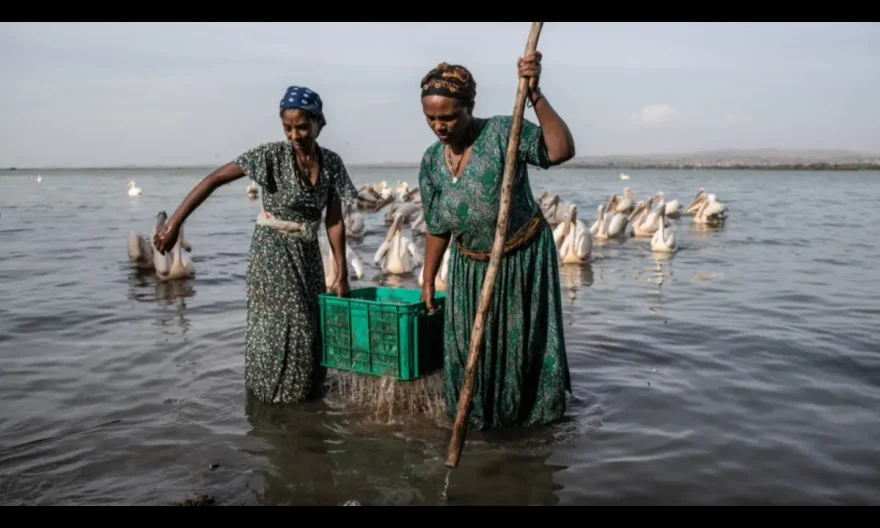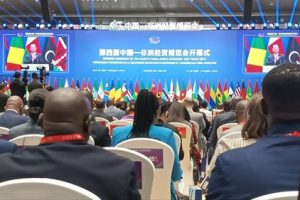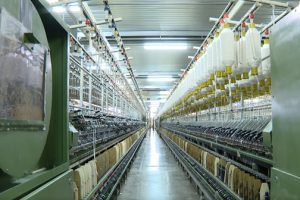
Poverty alleviation is the overall objective of rural development of Ethiopia. In this way, the poor and the disadvantaged, who remain scattered in the economy, could be integrated into the mainstream of the national economy. Emphasis is placed on the integration of decentralized participatory micro-economic with macro-economic planning. Of the myriads of subdivisions in the country, the fishery sector in Ethiopia is characterized by a labor force which is excessive in relation to the limited fishery resources potential.
Keeping this in mind, The Ethiopian Herald had a stay with Melkamu Demena, an agro economist graduated from Dilla University and working as a consultant.
He said, “As population growth is projected high, the prospects for increasing the fishermen’s income through higher labor productivity, has to be well focused on. Socioeconomic constraints arise from over population of the nation, low incomes, low social, educational and economic status of the fishermen, lack of alternative employment opportunities, and low environmental awareness.”
The socioeconomic factors affecting land and related resource use are complex and exert increasing pressures on the resources. Ethiopia, like most of Africa, suffers from malnutrition, poverty, and economic stagnation, and environmentally unsustainable practices. Improving fisheries will contribute to poverty alleviation, economic growth, proper nutrition, and ecological growth, he added.
He said, “Ethiopia’s livestock and fisheries sector holds immense potential for economic growth and development. With the largest livestock population in Africa and ranking fifth in the world, the sector accounts for nearly 20 percent of the country’s GDP and employs a significant portion of the labor force. Furthermore, Ethiopia has untapped opportunities in the fisheries and aquaculture sector. Recognizing this potential, the Ethiopian government along with development partners has been working for developing the sector.”
Not only are young Ethiopians creating employment opportunities for themselves, but they are also contributing a lot to the overall economic growth of the country. Their dedication and enthusiasm serve as a testament to the potential of the fishery subsector to promote job creation and youth empowerment, he stated.
Melkamu said, “The development activity revolving around this is enhancing the productivity and efficiency of the livestock and fisheries sector, which leads to increased availability and accessibility of nutritious food sources. This, in turn, improves the nutritional status of families and individuals, especially in rural areas where access to diverse and nutritious food can be limited. Improved nutrition has a direct impact on human capital as it enhances physical and cognitive development, leading to better health outcomes and improved productivity.”
According to Melkamu, extensive aquaculture in the form of stocking and enhancing artificial lakes, reservoirs and small water bodies has been practiced since long back. Aquaculture is recognized as an alternative means of achieving food security and poverty reduction in the rural area, and is now considered an integral part of rural and agricultural development policies and strategies.
He further elucidated that though Ethiopians are traditionally meat eaters, eating habits have been shifting in favor of fish in areas and communities where there is regular and sufficient supply. Aquaculture prospects on an extensive scale seem considerable when viewed in the light of the high priority given to water harvesting, and from the physical suitability of the country for the best known cultured species. In addition, availability of agricultural residues and industrial by-products for feed seems to support small-scale commercial aquaculture.
Plus to that, he said, commercial aquaculture for export seems promising. Looking at these possibilities, the government of Ethiopia has tried to attach due emphasis to boost the subsector.
“Fish is one of the known aquatic animals used for human consumption as food. Aquatic animals in general do contain a high level of protein with an amino acid profile, similar to that of the meat of land animals. The flesh of a fish is also readily digestible and immediately utilizable by the human body, which makes it suitable for complementing the high carbohydrate diets.
Compared with land animals, with some exceptions, such as shellfish, aquatic animals have a high percentage of edible flesh, and there is little wastage. Aquatic animals are a source of minerals such as calcium, iron and phosphorus as well as trace elements and vitamins. Marine species are particularly rich in iodine. The fatty acid content is high in poly unsaturated and particularly those which are attributed to reduce blood cholesterol,” he said.
As to him, there are also some indications that certain fatty acids in fish may provide protection against renal disease. Increasing the per capita consumption of fish and shellfish in any country can benefits health standards. Fish properly preserved, prepared and presented in the right form is popular in most households, particularly in towns and cities like Addis Ababa.
Ethiopia’s fisheries are entirely fresh water, in its many lakes, rivers and reservoirs, as it has no marine coastline. Although per capita consumption of fish is very low in Ethiopia, there is steady growth in demand reflecting population increase, rising incomes and a shift in preferences. The main areas of consumption are Addis Ababa and the populations and towns close to the main production areas, Melkamu opined.
Fisheries management in Ethiopia would have great contribution to the economy. This is because fisheries provide employment, food and income and it makes possible evaluation of overexploitation of the fisheries, he added.
As to Melkamu, since fishery production is overexploited due to inappropriate fishing practice the potential of fish was underdeveloped and the management rule and regulation at federal level and regional level to control the devastation was very poor.
Artisanal fisheries are mainly community-based and tend to be organizationally weak and have poor access to information. They are also often in debt to money-lenders since they can offer little collateral. This may pressurize them into over-fishing and in an open-access situation; communities and interlopers scramble competitively for dwindling resources with damaging results on the stocks. Structured ownership or right of access by communities is crucial particularly where government institutions are weak.
However, water bodies are often large and fish are very mobile so there is a limit to the extent a single community or administrative district can manage and control its own resources. Estimates of the impact of fishing on the stock are the most important piece of information communities need in conducting their own management. This is also typically absent from traditional management systems so far investigated. It is generally the case that it is at the institutional level of the community that information, in the appropriate format, is least available.
In general, mechanisms for community management are less understood in fisheries than in other sectors such as forestry or wildlife. The Code of Conduct has guidelines that are as applicable to artisanal communities as to high seas fisheries, and also highlights the institutional support required from development partners. It also underlines the fact that access to a fishery gives a responsibility for its management which underpins equally the basis of community management.
Besides, it is possible to summarize some of the key points to be taken into account for the proper inclusion of fisheries into development policy. One way of doing the legal and right fishery process is by strengthening flows of relevant information. The management of fish stocks needs regular feedback of relevant information, otherwise rational decisions on stocks under pressure cannot be taken. Most fishermen have access to considerable information collecting and analytical capacity and this is used to some extent to run the business legally. But the supply of information to each level is critical in assisting decision-makers.
Regional management of fisheries must have an element of information sharing: this is another crucial issue given that waters extend over the boundaries of more than one country and many fish species are migratory. The support to regional fishery hubs like in Sothern part or those which have water bodies to be fished as they comprise water bodies like lakes, rivers and other related water bodies have to be taken into account as they pay a paramount role in supporting the economy of the nation though sometimes they are undertaken informally.
BY MENGESHA AMARE
THE ETHIOPIAN HERALD FRIDAY 3 JANUARY 2025




